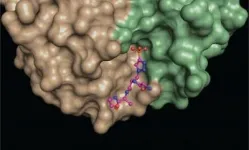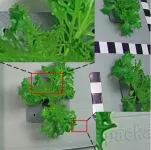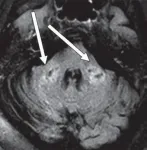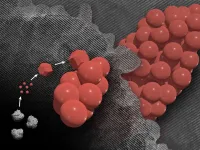Understanding cellular clock synchronization
Thanks to a unique imaging instrument, scientists at UNIGE are revealing that cellular clocks in a given organ can be synchronized without the intervention of external signals
2021-02-18
(Press-News.org) Circadian clocks, which regulate the metabolic functions of all living beings over a period of about 24 hours, are one of the most fundamental biological mechanisms. In humans, their disruption is the cause of many metabolic diseases such as diabetes or serious liver diseases. Although scientists have been studying this mechanism for many years, little is known about how it works. Thanks to an observation tool based on bioluminescence, a research team from the University of Geneva (UNIGE) were able to demonstrate that cells that compose a particular organ can be in-phase, even in the absence of the central brain clock or of any other clocks in the body. Indeed, the scientists managed to restore circadian function in the liver in completely arrhythmic mice, demonstrating that neurons are not unique in their ability to coordinate. Results can be discovered in the journal Gene and Development.
For a long time, the scientific community considered that circadian rhythms were entirely controlled by a central clock located in the brain, before discovering, a few years ago, the existence in all cells of the body of a small molecular clock. "Nevertheless, the brain clock was deemed indispensable for the synchronization of all peripheral clocks," says Ueli Schibler, honorary professor at the UNIGE Faculty of Science, who initiated the work. "However, usual research tools did not allow us to explore the validity of this hypothesis. Indeed, to do so, we must be able to follow in real time, over a relatively long period of time, the expression of the circadian genes of an animal with or without a functional brain clock," explains Flore Sinturel, researcher at the Department of Medicine of UNIGE Faculty of Medicine and first author of this work.
Bioluminescence to study circadian rhythms
As early as 2013, Professor Schibler's team developed a completely new technology, now commercially available , which makes it possible to monitor the activity of a specific organ and the circadian rhythms that control it. "We were inspired by the principle of bioluminescence that can be observed in fireflies, for example," he explains. "Our mice carry a circadian reporter gene that produces an enzyme, luciferase. We then add luciferin to their drinking water, a substance which, when oxidized by the luciferase, causes photon emission." Light is then captured by a photomultiplier that records the number of photons emitted per minute and thus detects the expression of the circadian reporter gene over time.
Liver clock cells are phase-coupled without receiving timing cues
After the central clock was removed, scientists observed that all the clocks in the body are in different phases. However, at the level of a single organ - the liver in this case - the mice retain a robust and coordinated circadian rhythmicity. So, while the central clock can synchronize all the organs in the same phase, the cells communicate enough to maintain a coordinated rhythmicity within a single organ. "While it was thought that only neurons had strong enough connections to ensure this circadian coordination, we are now demonstrating that this is not the case," says Flore Sinturel. "This puts the singularity of the central clock into perspective."
The scientists then confirmed their discovery: in arrhythmic mice, i.e. mice with no circadian clocks whatsoever, the researchers succeeded in restoring the expression of rhythmicity in the liver alone, without touching the other organs. "This allowed us to show that a clock restored in one organ works and has rhythms, even in the absence of all the other clocks in the body," she explains. They now want to understand how these cells stay in the same phase when they are not receiving any information, either from the brain or from other external signals. Their hypothesis? The existence of a form of coupling, in the form of an exchange of molecules between these different cells.
INFORMATION:
[Attachments] See images for this press release:
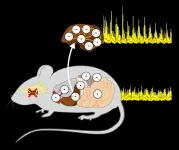
ELSE PRESS RELEASES FROM THIS DATE:
2021-02-18
LA JOLLA--(February 17, 2021) In structural biology, some molecules are so unusual they can only be captured with a unique set of tools. That's precisely how a multi-institutional research team led by Salk scientists defined how antibodies can recognize a compound called phosphohistidine--a highly unstable molecule that has been found to play a central role in some forms of cancer, such as liver and breast cancer and neuroblastoma.
These insights not only set up the researchers for more advanced studies on phosphohistidine and its potential role in cancer, but will also enable scientists ...
2021-02-17
Deprive a mountain range of its wolves, and soon the burgeoning deer population will strip its slopes bare. "I now suspect that just as a deer herd lives in mortal fear of its wolves, so does a mountain live in mortal fear of its deer," wrote ecologist Aldo Leopold in his landmark 1949 title "A Sand County Almanac."
Leopold proposed that predators keep herbivore populations in check to the benefit of an ecosystem's plant life. Remove one link in the food chain, and the effects cascade down its length. The idea of a trophic cascade has since become a mainstay in conservation ecology, with sea urchins as a prime example just off the California ...
2021-02-17
Rapid global urbanization has dramatically changed the face of our planet, polluting our atmosphere with greenhouse gases and causing global warming. It is the need of the hour to control our activities and find more sustainable alternatives to preserve what remains of our planet for the generations to come.
Carbon dioxide (CO2) and carbon monoxide (CO) make up a large proportion of industrial flue gases. Recent research has shown that certain microorganisms are capable of metabolizing these gases into useful by-products. Thus, attempts are now being directed to ...
2021-02-17
BOSTON - Delirium, a common syndrome among older adults, particularly in those who have recently undergone surgery, critically ill patients in the ICU, and in older patients with multiple health issues, is a form of acute confusion that is characterized by poor attention, disorientation, impaired memory, delusions, and abrupt changes in mood and behavior. Moreover, patients who experience delirium are at increased risk of long term cognitive decline. Recently, clinicians and scientists have recognized that delirium is one of the first signs of COVID-19 infection in older patients and that it occurs frequently in patients with severe COVID-19 disease.
In a new study led by an interdisciplinary team of gerontologists, geriatricians, precision medicine ...
2021-02-17
Dogs are generally considered the first domesticated animal, while its ancestor is generally considered to be the wolf, but where the Australian dingo fits into this framework is still debated, according to a retired Penn State anthropologist.
"Indigenous Australians understood that there was something different about the dingoes and the colonial dogs," said Pat Shipman, retired adjunct professor of anthropology, Penn State. "They really are, I think, different animals. They react differently to humans. A lot of genetic and behavioral work has been done with wolves, dogs and dingoes. Dingoes come out somewhere ...
2021-02-17
Scientists from the Skoltech Center for Computational and Data-Intensive Science and Engineering (CDISE) and the Skoltech Digital Agriculture Laboratory and their collaborators from the German Aerospace Center (DLR) have developed an artificial intelligence (AI) system that enables processing images from autonomous greenhouses, monitoring plant growth and automating the cultivation process. Their research was published in the journal IEEE Sensors.
Modern technology has long become a fixture in all spheres of human life on Earth. Reaching out to other planets is a new challenge for humankind. Since greenhouses are likely to be the only source ...
2021-02-17
BOSTON - Use of a cosmetic laser invented at Massachusetts General Hospital (MGH) may improve the effectiveness of certain anti-tumor therapies and extend their use to more diverse forms of cancer. The strategy was tested and validated in mice, as described in a study published in Science Translational Medicine.
Immune checkpoint inhibitors are important medications that boost the immune system's response against various cancers, but only certain patients seem to benefit from the drugs. The cancer cells of these patients often have multiple mutations that can be recognized as foreign by the immune system, thereby inducing an inflammatory response.
In an attempt to expand the benefits of immune checkpoint inhibitors ...
2021-02-17
Leesburg, VA, February 17, 2021--According to an open-access article in ARRS' American Journal of Roentgenology (AJR), COVID-19-related disseminated leukoencephalopathy (CRDL) represents an important--albeit uncommon--differential consideration in patients with neurologic manifestations of coronavirus disease (COVID-19).
"Increasingly," wrote Colbey W. Freeman and colleagues from the University of Pennsylvania, "effects of COVID-19 on the brain are being reported, including acute necrotizing encephalopathy, infarcts, microhemorrhage, acute disseminated encephalomyelitis, and leukoencephalopathy."
Among the 2,820 patients with COVID-19 admitted to the authors' institution between ...
2021-02-17
When materials reach extremely small size scales, strange things begin to happen. One of those phenomena is the formation of mesocrystals.
Despite being composed of separate individual crystals, mesocrystals come together to form a larger, fused structure that behaves as a pure, single crystal. However, these processes happen at scales far too small for the human eye to see and their creation is extremely challenging to observe.
Because of these challenges, scientists had not been able to confirm exactly how mesocrystals form.
Now new research by a Pacific ...
2021-02-17
A considerable portion of the efforts to realize a sustainable world has gone into developing hydrogen fuel cells so that a hydrogen economy can be achieved. Fuel cells have distinctive advantages: high energy-conversion efficiencies (up to 70%) and a clean by-product, water. In the past decade, anion exchange membrane fuel cells (AEMFC), which convert chemical energy to electrical energy via the transport of negatively charged ions (anions) through a membrane, have received attention due to their low-cost and relative environment friendliness compared ...
LAST 30 PRESS RELEASES:
[Press-News.org] Understanding cellular clock synchronization
Thanks to a unique imaging instrument, scientists at UNIGE are revealing that cellular clocks in a given organ can be synchronized without the intervention of external signals

